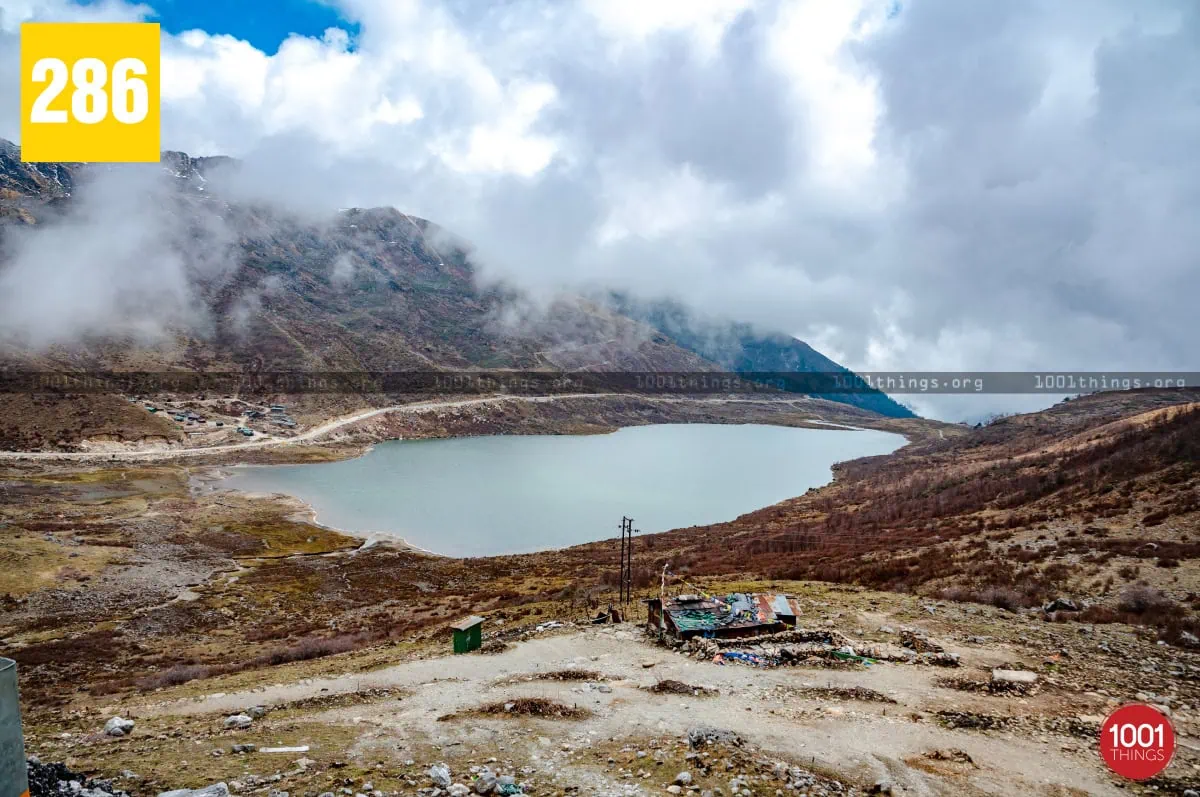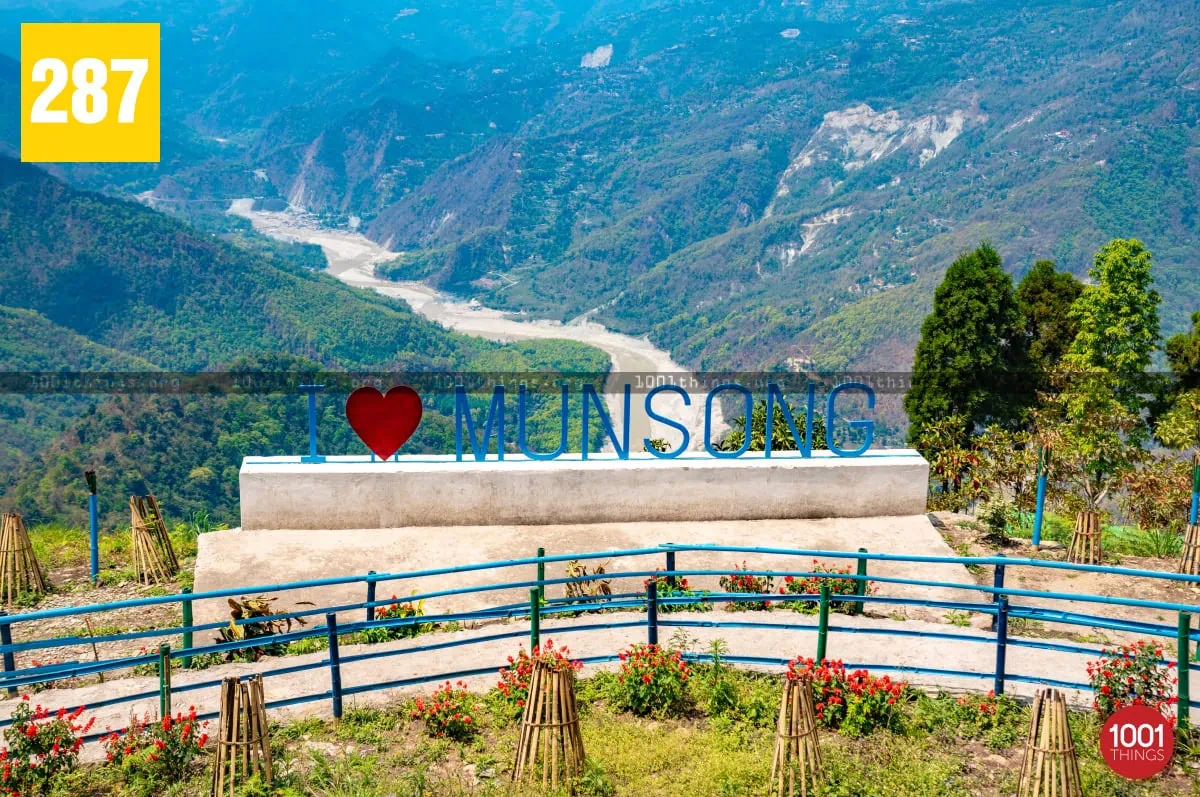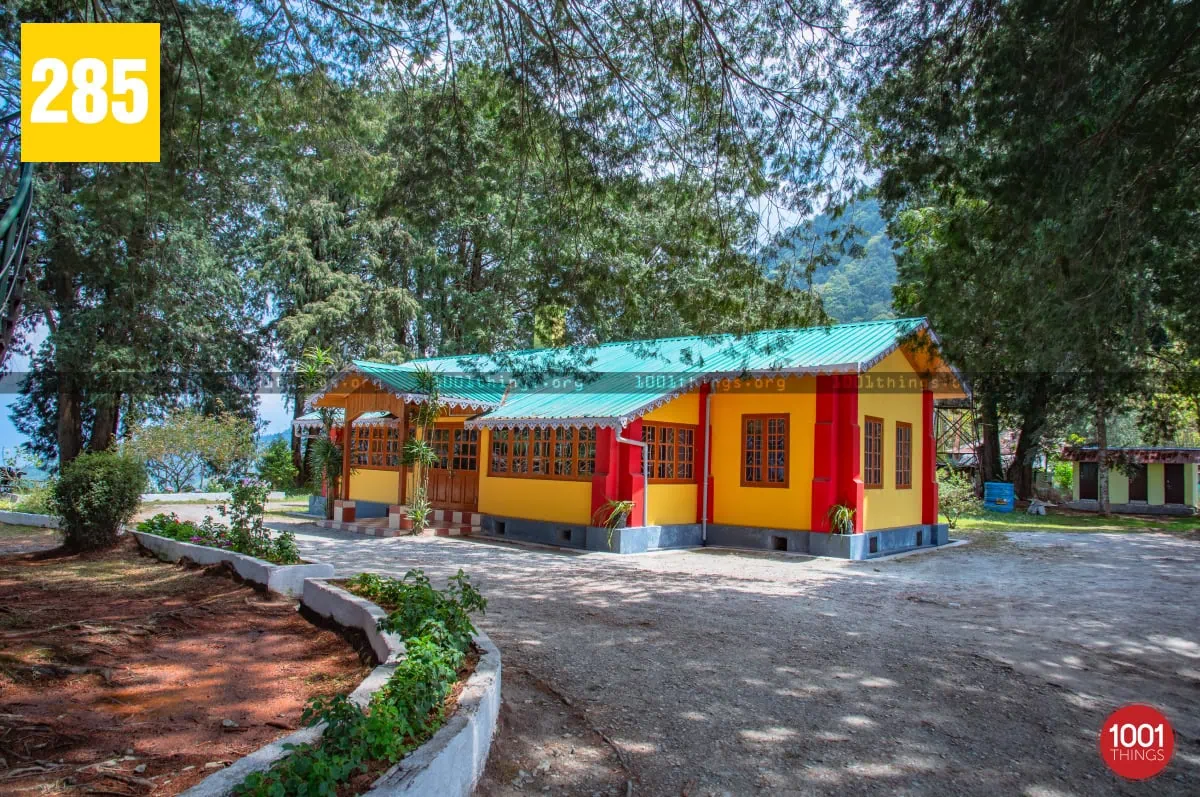Tucked away in the eastern reaches of Sikkim at an altitude of approximately 13,066 feet lies Kupup Lake, also known as Elephant Lake or Bitan Cho. As the name suggest, this high-altitude glacial lake is shaped strikingly like an elephant.
Located along the legendary Silk Route, near the Indo-China border at Jelep La Pass, Kupup Lake is a peaceful yet captivating destination. Whether you’re drawn by its mesmerising reflections, unique geographical features, or the thrill of standing close to one of the world’s most remote frontiers, Kupup Lake is sure to leave you spellbound.

How to Reach:
- By Air: The nearest airport to Kupup Lake is Pakyong Airport (PYG), located around 70 km from Gangtok. However, due to weather-related cancellations and limited flight operations, many travelers prefer flying into Bagdogra Airport (IXB) in West Bengal, which is about 125 km from Gangtok. From either airport, you can hire a taxi or book a shared cab to reach Gangtok. Kupup Lake is another 3 to 4 hours drive from Gangtok, depending on weather and road conditions.
- By Rail: The nearest major railway station is New Jalpaiguri (NJP), located near Siliguri in West Bengal, about 120 km from Gangtok. NJP is well-connected to major Indian cities like Kolkata, Delhi, Guwahati, and Mumbai. From NJP, you can travel to Gangtok by taxi or shared jeep. After reaching Gangtok, continue your journey to Kupup Lake with a pre-arranged vehicle and permit.
Important Note:- Since Kupup Lake lies in a restricted area close to the India-China border, tourists must obtain Restricted Area Permits (RAP) or Protected Area Permits (PAP) in advance. These are generally arranged by authorized tour operators in Gangtok and are mandatory for all Indian citizens. Foreign nationals are not permitted to travel beyond Tsomgo Lake.
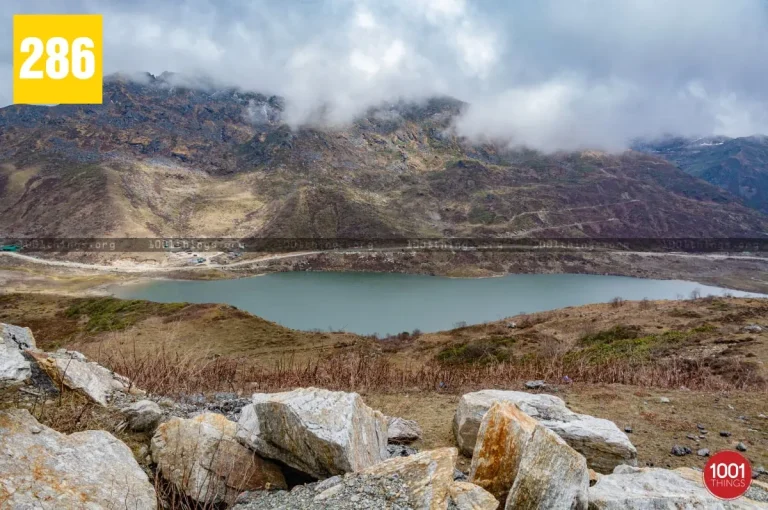
Key Attractions:
The journey to Kupup itself takes you through scenic mountain roads, dense forests, and snow-covered paths, depending on the season. The route follows the old Silk Road, offering glimpses of military outposts, alpine flora, and steep valleys a drive as thrilling as the destination itself. Private vehicles with a valid permit or local tour operators can arrange transportation.
The lake’s elephant-like shape is not just a geographical curiosity it also enhances its mystical appeal, especially when viewed from higher vantage points. Surrounded by snow-capped peaks and emerald valleys, the lake reflects a dramatic landscape that changes hues with the seasons.
A short distance away lies the Yak Golf Course, officially the highest golf course in the world, recognized by the Guinness Book of World Records. Kupup is also a key point on the ancient Silk Route and offers a peek into the region’s trading history and geopolitical relevance. The calm, chilly atmosphere combined with jaw-dropping vistas makes it a haven for photographers, bikers, and nature lovers.
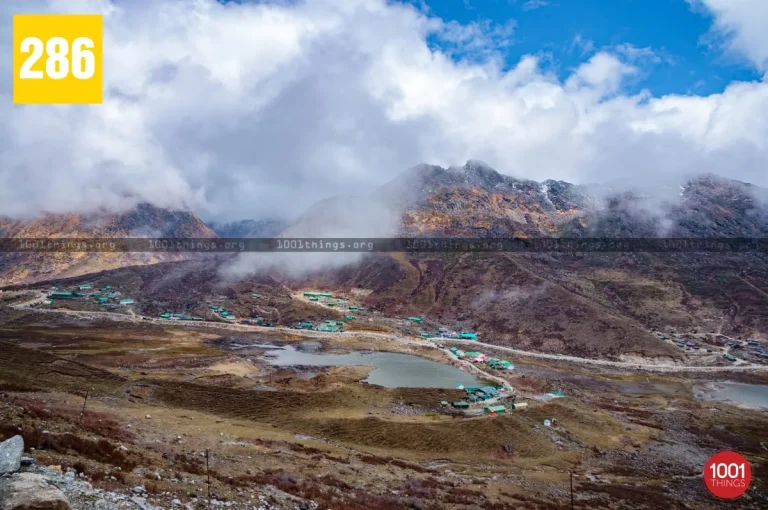
Best Time to Visit:
The ideal time to visit Kupup Lake is between April and June or September to November, when the roads are accessible, and the weather is clear. During spring and early summer, the area comes alive with blooming rhododendrons and alpine flowers. Winters are harsh, with heavy snowfall blocking access roads, but for those who can make it, the frozen lake surrounded by white landscapes is a sight to behold.
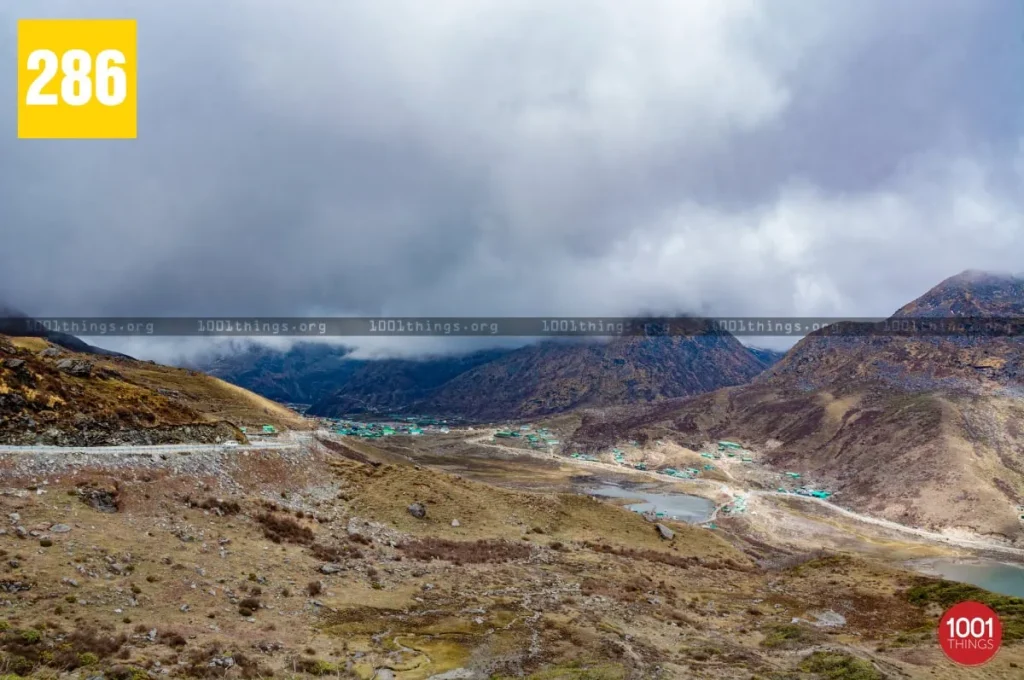
Nearby Places to Explore:
A visit to Kupup Lake opens the door to exploring several other breathtaking destinations along the historic Silk Route, each offering a unique experience of the Eastern Himalayas.
- Tsomgo Lake (Changu Lake):- Located about 40 km from Gangtok and en route to Kupup, this stunning glacial lake is surrounded by steep mountain slopes and remains frozen during winter. In spring and summer, it transforms into a shimmering blue expanse bordered by blooming rhododendrons. Tsomgo is not only a visual treat but also holds spiritual significance among locals, who believe the lake’s water can predict the future.
- Baba Harbhajan Singh Mandir (Baba Mandir):- Roughly 52 km from Gangtok and not far from Kupup, this unique shrine is dedicated to an Indian Army soldier, Baba Harbhajan Singh, who is believed to protect soldiers posted in the region. The temple has become a site of faith, patriotism, and mystery, drawing visitors intrigued by its story and stunning setting amidst snow-covered peaks.
- Jelep La Pass:- Located near Kupup Lake, Jelep La is a historic mountain pass that once formed part of the ancient trade route between India and Tibet. Although the pass is now closed to tourists due to its sensitive border location, its proximity adds a sense of historical depth and strategic significance to the Kupup region. The area around the pass offers dramatic views and is often blanketed in mist or snow, enhancing its mystique.
- Zuluk:- Situated further along the Old Silk Route, Zuluk is a small Himalayan village known for its 32 hairpin bends—a photographer’s dream. The zigzag roads, combined with sweeping views of the Eastern Himalayas and a peaceful mountain vibe, make it an increasingly popular offbeat destination. From Zuluk, viewpoints like Thambi Viewpoint offer spectacular sunrise views over the Kanchenjunga range. Zuluk also provides a deeper cultural and ecological look at life in the high Himalayas.
- Nathang Valley:- Often called the “Ladakh of the East,” Nathang Valley is located near Zuluk and offers wide-open landscapes, grazing yaks, and a peaceful silence broken only by the mountain breeze. It’s a great spot for overnight stays for those exploring the full stretch of the Silk Route.
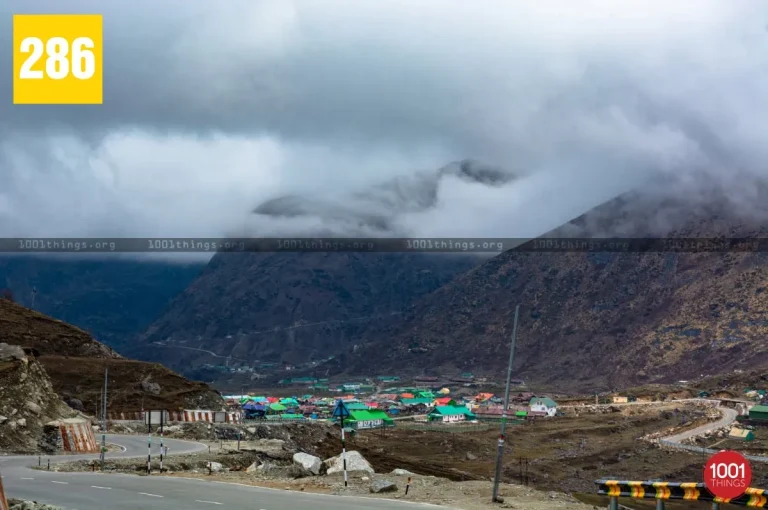
Responsible Travel Tips:
- Do not litter, carry a trash bag at all time.
- The weather is unpredictable, carry an Umbrella and a jacket.
- Respect the local guides and villagers, their culture and personal space.
- Support local businesses and tourism.

